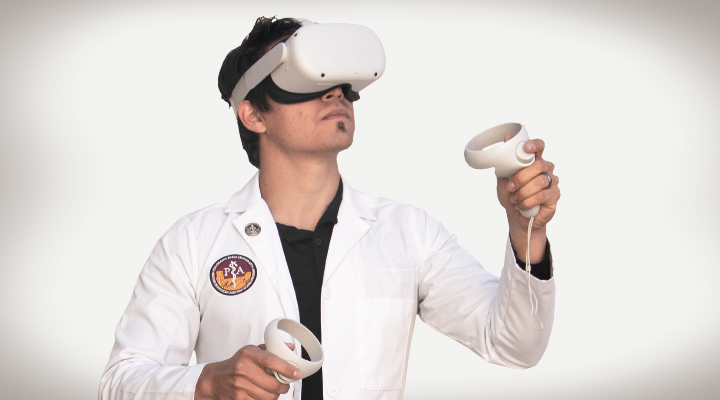$1 Million grant to give health sciences students 3D view of human anatomy
Virtual reality (VR) is not just for fake driving in a fake race on a fake Indianapolis Motor Speedway anymore. It is a powerful training tool in many fields including medicine. And in a soon-to-be learning lab at CMU, VR will take students inside the human body.
A $1.1 million grant from the U.S. Economic Development Administration (EDA) will help equip and staff an anatomical learning lab with VR technology. The new lab will be in the St. Mary’s SCL Health Medical Education Center scheduled to open in November.
The VR technology will help students in all health sciences fields, said Assistant Professor Amy Bronson, EdD, including those in occupational and physical therapy, physician assistant and nursing programs, and biology students aiming for medical school.
The grant funds will allow CMU to purchase VR headsets and create lab spaces for student groups to collaborate during virtual learning experiences. Funds will also cover anatomy teaching software, the computers to run it and a lab instructor knowledgeable in both human anatomy and VR.
“Using a VR 3D model, students will learn structurally how our bodies work. They can see it, feel it, in another way,” said Bronson, who is also the CMU Physician Assistant Studies program director and assistant vice president for research and innovation.
While researching existing anatomy VR software, Bronson found a shortage of satisfactory teaching programs. But then she met Tod Clapp, PhD, assistant professor in Colorado State University’s Department of Biomedical Sciences, where his work includes investigating the use of VR and other technologies as teaching tools.
“I had several great conversations with Dr. Clapp about how we might work together,” she said.
CMU will receive some existing anatomy software from Clapp’s Banana Vision VR Educational Research Center and will work with Banana Vision to develop more teaching software specifically to meet students’ needs.
The EDA grant is part of a federal program to fund local projects supporting communities impacted by the declining use of coal in energy production. CMU’s 14-county western Colorado service area fits into that category.
“By offering training close by, we will help meet an immediate need of retraining people in coal-affected communities, and we’ll help build career pathways for future healthcare professionals from those communities,” Bronson said. “And I have a goal to take the technology on the road to middle and elementary schools. It’s important to expose young students to healthcare as a possible profession.”
